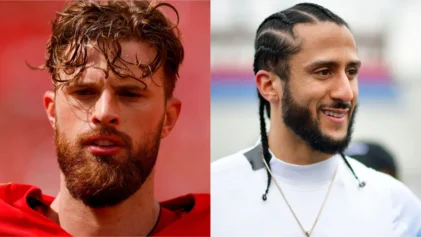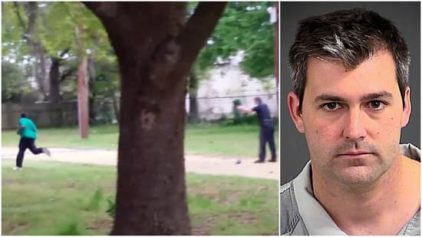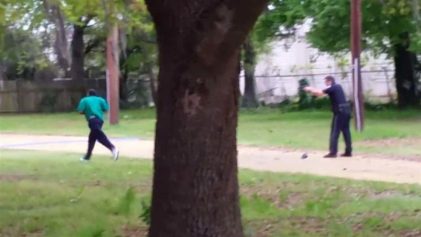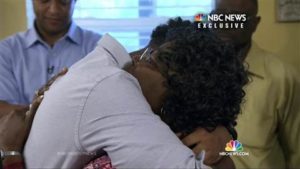
Scott’s death marked yet another moment where the nation was left reflecting on the Black community’s troubled relationship with law enforcement and just how this marginalized community could start fighting back. This time, the topic of discussion was cell phone videos.
“I don’t know how this would’ve turned out without the video,” one of Scott’s family members said in a video released by NBC as they thanked Feidin Santana, the young man who captured Scott’s death on camera.
That’s perhaps the hardest thing to imagine—not just how this would have turned out without the footage but how many other cases without footage have already turned out.
This has now catapulted the power of the cell phone vigilantes back into the national spotlight. It’s why many believe Santana’s video is the only reason North Charleston Patrolman Michael Slager has been charged with murder after fatally shooting Scott as he ran away.
“For myself as a person and for them as a family, I know if I had been in a situation and they were the ones who witnessed it, I’m sure they would look for justice also,” Santana said.
Santana is an honorary member of the Scott family now as one of the family members referred to him as his “brother” while encouraging others to do what Santana did and catch officers in the act on video.
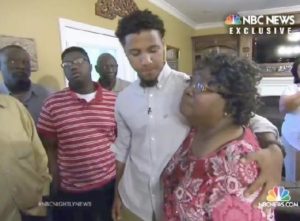
“What we’re seeing are the things I have argued—and other lawyers, civil rights lawyers—have argued for years, and people just looked at us in disbelief—that it could not be happening the way that you’re presenting it,” said civil rights attorney A. Dwight Pettit, according to Raw Story.
For those who have never had to experience the mistreatment and abuse that law enforcement subject Black people to, the stories can truly be hard to believe.
An officer fatally shoots an unarmed Black man and tosses a gun, knife or drugs next to his body to justify his eagerness to pull the trigger.
It sounds like the tale of someone who spent too much time watching episodes of Law & Order and CSI.
It sounds like it could never be reality. That is, until you see it on tape.
“Through the ability of these things to be taped and to see them on television the next day, people are being shocked across the nation,” Pettit added.
He explained that police officers almost always use the same claims to defend themselves.
“It’s the same defense—we know what the defense is going to be,” Pettit said. “The police officer’s going to say that, ‘I thought he was reaching,’ or, ‘I saw something that looked like a weapon, and so therefore, I was in apprehension of bodily injury or death, and so I reacted instantly.’ “
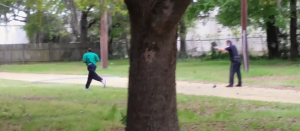
While cell phone videos are not always enough to bring justice, as the nation witnessed with the case of Eric Garner, they are certainly an important resource that the public has to utilize as it continues the mission to expose racist, abusive police officers.
But that power also comes with limitations.
In some cases, the very person attempting to be a hero with a cell phone in hand, can find themselves facing their own onslaught of legal troubles.
That’s because filming the police is perfectly legal. Interfering with officers is not.
“You can film police on duty as long as you’re not interfering with their activities,” Mark Graber, who teaches constitutional law at the University of Maryland, told NPR.
Unfortunately, and perhaps purposefully, the law remains incredibly vague when it comes to defining interference with police.
“Precisely what constitutes ‘interfering with police duties’ is not entirely clear,” Graber said. “This strikes me as an issue that within five years is likely to be a Supreme Court decision.”
According to Graber, citizens’ best option is to film from a reasonable distance. Getting too close to the officers in the midst of a struggle could count as interference.
Citizens should also consider proclaiming that they are filming while the camera is rolling. If not, Graber says officers can claim that they weren’t sure if the bystander was holding a cell phone or a weapon.
It’s one of those claims that seems unreasonable and bizarre, but when the police oficer’s word is held higher than that of a citizen’s, it could still create serious problems for the person who just wanted to make sure justice would be served.
The law needs to provide citizens with a clear definition of interference so nobody will feel discouraged or afraid to film the police.
After all, these cell phone videos are essential to proving to the rest of the nation that incidents like Scott’s are not isolated or rare.
South Carolina residents are particularly passionate about that point.
“This is something that exists within a system of down here,” Muhiyidin Moye D’Baha, an organizer with Black Lives Matter, told Reuters about the patterns of racism that citizens say plagues South Carolina.
Activists in the state insist that Scott’s death is just even more evidence of the “atmosphere of racism” that leaves many Black residents in the state feeling threatened by police.
Scott’s death marked the 11th time this year alone that a officer in the state has been involved in a shooting.
“The community has felt that those shootings have gone on deaf ears and been swept under the rug,” Otha Meadows, president of the local chapter of the Urban League in South Carolina, told Reuters.
Citizens are clinging on to hope that perhaps now, such issues in the community will be addressed and violent officers will be taken off the streets.
The stark contrast between officer Slager’s story and the story told by the cell phone video has caused the push for more police body cameras to surface as well.
Perhaps if the officer was equipped with such a surveillance device, there wouldn’t be any questions about the gap between the initial traffic stop that was caught on dash cam video and the shooting captured by the bystander’s cell phone.
The dash cam video surfaced on Thursday and showed Scott getting out of his vehicle before running out of frame.
The entire video is about four minutes long and captures what seemed to be a peaceful encounter between Slager and Scott.
This draws questions of why Scott decided to run in the first place as well as how Slager is possibly claiming he was afraid for his life when there was no physical struggle caught on tape.
As Slager prepares to stand trial for murder, he has called on the aid of prominent Charleston lawyer Andy Savage who also represented convicted al Qaeda operative Ali al-Marri in the past.

